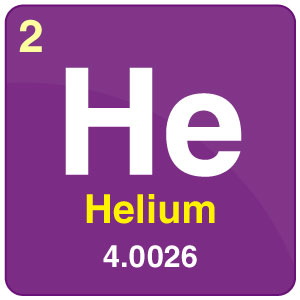What is Chemistry?
Chemistry is a subdiscipline of science that deals with the study of matter and the substances that constitute it. It also deals with the properties of these substances and the reactions undergone by them to form new substances. Chemistry primarily focuses on atoms, ions, and molecules which, in turn, make up elements and compounds. These chemical species tend to interact with each other through chemical bonds. It is important to note that the interactions between matter and energy are also studied in the field of chemistry.
Relationship Between Chemistry and Other Branches of Science
‘Science’ can be defined as the systematic study of the natural universe, its structure, and everything it encompasses. Due to the immensity of the natural universe, science has been divided into several disciplines that deal with certain aspects of the universe. The three primary subcategories of science under which these disciplines can be grouped are:
◆ The Formal Sciences:
Involves the study of the language disciplines that concern formal systems. Examples of scientific disciplines that fall under this category include logic and mathematics. Can be thought of as the “language of science”.
◆ The Natural Sciences:
Involves the study of natural phenomena through experiments and observations. Chemistry, physics, and biology fall under this category of science.
◆ The Social Sciences:
Involves the study of human societies and the relationships between the humans that dwell in these societies. Examples of scientific disciplines that fall under this category include psychology, sociology, and economics.
When the relationships between the major branches of science are considered, chemistry is found to lie close to the centre (as illustrated below).
Thus, chemistry can be viewed as a central science whose roots bore into several other subdisciplines of science.
Branches of Chemistry
The five primary branches of chemistry are physical chemistry, organic chemistry, inorganic chemistry, analytical chemistry, and biochemistry. Follow the buttons provided below to learn more about each individual branch.
◆ Organic Chemistry
◆ Chemistry
◆ Inorganic Chemistry
◆ Physical Chemistry
◆ Bio Chemistry
◆ Analytical Chemistry
◆ Chemical Reactions
Apart from these primary branches, there exist several specialized fields of chemistry that deal with cross-disciplinary matters. Some such examples include medicinal chemistry, neurochemistry, materials chemistry, nuclear chemistry, environmental chemistry, polymer chemistry, and thermochemistry.
Examples of Chemistry in Our Daily Lives
Chemical reactions are constantly taking place around us. The human body facilitates thousands of chemical reactions every day. From the digestion of food to the movement of muscles – all bodily actions involve chemical reactions. A few other examples of chemistry in the day-to-day lives of humans are listed below.
◆ The process of photosynthesis that enables plants to convert water, sunlight, and carbon dioxide into glucose and oxygen is a chemical reaction. This process is the foundation upon which the entire food chain is built.
◆ Soaps and detergents that are used for hygiene work using a chemical process known as emulsification. Furthermore, they are produced using a chemical process known as saponification.
◆ Even the sunscreen used by humans to protect themselves from the harmful UV-A and UV-B radiation of the sun is based on chemistry. These lotions and creams consist of a combination of inorganic and organic compounds that either filter or block the incoming ultraviolet radiation.
◆ Acids, Bases, and Salts
◆ Alcohols, Phenols, and Ethers
◆ Aldehydes, Ketones, and Carboxylic
◆ Acids
◆ Amines
◆ Analytical Chemistry
◆ Atoms and Molecules
◆ Biomolecules
◆ Carbon and its Compounds
◆ CBSE Chemistry
◆ Chemical Bonding and Molecular
◆ Structure
◆ Chemical Compounds
◆ Chemical Kinetics
◆ Chemical Reactions and Equations
◆ Chemistry in Everyday Life
◆ Classification of Elements and
◆ Periodicity in Properties
◆ Coal and Petroleum
◆ Combustion and Flame
◆ Difference Between Articles
◆ Electrochemistry
◆ Elements of the Periodic Table
◆ Environmental Chemistry
◆ Equilibrium
◆ Fibre to Fabric
◆ General Principles and Processes of
◆ Isolation of Elements
◆ Haloalkanes and Haloarenes
◆ HydrocarbonsHydrocarbons
◆ Hydrogen
◆ Is Matter Around Us Pure?
◆ Materials: Metals and Non-metals
◆ Matter in Our Surroundings
◆ Named Reactions
◆ Organic Chemistry
◆ Periodic Classification of Elements
◆ Physical and Chemical Changes
◆ Pollution of Air and Water
◆ Polymers
◆ Redox Reactions
◆ Solutions
◆ Some Basic Concepts of Chemistry
◆ States of Matter
◆ Structure of Atom
◆ Surface Chemistry
◆ Synthetic Fibres and Plastics
◆ The d and f – Block Elements
◆ The p-Block Elements
◆ The s Block Elements
◆ The Solid State
◆ Thermodynamics
◆ Uses of Chemical Compounds


No comments:
Post a Comment